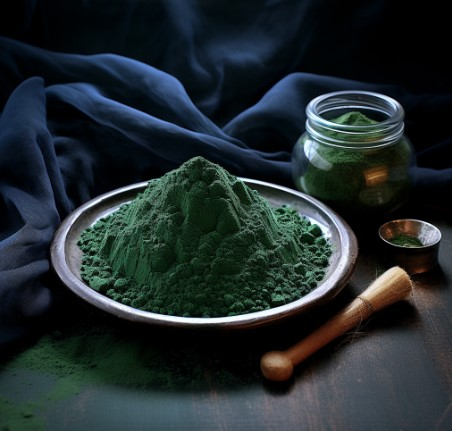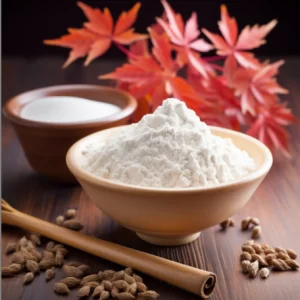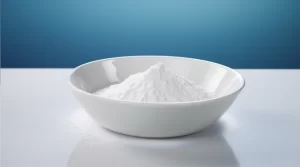Pentingnya bubuk spirulina untuk kesehatan anak-anak

Anak-anak dan remaja berada dalam tahap pertumbuhan yang cepat, harus terus mengambil berbagai nutrisi penting ke dunia luar, memperbaiki jaringan tua, proliferasi jaringan baru, terutama sebagai protein "bahan bangunan" tubuh sebagai komposisi zat pengatur fisiologis berbagai vitamin dan sebagai komposisi jaringan tubuh dan mempertahankan fungsi fisiologis normal dari garam anorganik esensial dan elemen. Ini adalah dasar material dari pertumbuhan dan perkembangan anak, untuk memastikan bahwa proses asimilasi melebihi proses alienasi, sehingga perkembangan penuh dapat dicapai.
Spirulina mengandung nutrisi yang relatif lengkap yang cocok untuk tumbuh kembang anak, dan membran sel spirulina tipis, tidak mengandung selulosa, sehingga mudah dicerna dan diserap, cocok untuk organ pencernaan anak yang belum terlalu sempurna, pencernaan dan penyerapannya tidak sebagus orang dewasa. Dalam keseluruhan nutrisi anak-anak, spirulina memiliki karakteristik sebagai berikut.
Kandungan protein dari spirulina setinggi 70%, kandungan asam aminonya relatif tinggi, dan 8 (atau 9) asam amino esensial lengkap. Komposisinya sangat dekat dengan standar komposisi 8 asam amino esensial yang dirumuskan oleh Kelompok Penasihat Protein Organisasi Kesehatan Dunia dan Organisasi Pangan dan Pertanian Dunia untuk makanan anak-anak prasekolah pada tahun 1985, dan dapat disebut sebagai makanan alami berkualitas tinggi dengan protein tinggi. Hanya bahan dasar bagi anak-anak untuk tumbuh dewasa.
Kedua, kandungan nutrisi yang lebih menonjol dari spirulina adalah karoten, yang mencapai 400mg/100g bubuk kering. Karoten yang terkandung dalam wortel, menurut provinsi yang ditentukan dari 1,35 (Beijing) - 3,70 (Tongsu) mg/100g antara (Tabel komposisi makanan edisi 1977). Karoten disebut sebagai sumber vitamin A, yang dapat diubah menjadi vitamin A di dalam tubuh, dan hati adalah tempat utama untuk menyimpan vitamin A, dan jumlah vitamin A yang disimpan di hati selama masa kanak-kanak sangat rendah, serendah sepersepuluh dari yang setara dengan orang dewasa. Kebutuhan vitamin A sebanding dengan pertumbuhan, ada bukti bahwa bayi dan anak kecil rentan terhadap kelompok usia defisiensi, dan vitamin A, seperti kebanyakan vitamin, tidak dapat disintesis dalam tubuh manusia, harus diperoleh dari makanan, oleh karena itu, anak-anak perlu secara teratur menjadi kaya vitamin A atau makanan karoten, Spirulina bubuk cocok untuk menyediakan karoten biasa sebagai suplemen untuk makanan anak-anak.
Karoten dapat meningkatkan pertumbuhan dan perkembangan tulang anak-anak, dan mekanismenya mungkin dengan meningkatkan biosintesis protein dan diferensiasi sel tulang. Pada kasus kekurangan vitamin A, tubuh tidak dapat menyerap tulang yang telah terbentuk di tulang di masa lalu, mengakibatkan penebalan tulang, pengecilan rongga tulang, proliferasi dan penebalan tengkorak yang berlebihan, yang akan mengganggu saraf tengkorak lainnya, dan penebalan tulang belakang, yang akan membuat pori-pori saraf tulang belakang menjadi lebih kecil, sehingga menekan saraf tulang belakang. Efek kekurangan vitamin A pada pertumbuhan tulang terutama dimanifestasikan dalam proliferasi tulang ke luar dalam tulang daripada pertumbuhan normal, yang mengganggu organ-organ di sekitarnya, terutama jaringan saraf. Hages percaya bahwa pertumbuhan tulang yang normal membutuhkan keseimbangan yang sangat baik antara osteoblas dan osteoklas. Masalah-masalah ini terjadi ketika keseimbangan ini terganggu atau ketika terlalu banyak aktivitas osteogenik, sehingga vitamin A atau karoten sangat membantu dalam pertumbuhan tulang anak-anak yang sedang tumbuh dengan cepat.
Kekurangan vitamin A paling sering terjadi pada anak-anak berusia 2-5 tahun. Meskipun dapat terjadi pada orang dewasa dan anak-anak, sebenarnya sulit untuk memodelkan defisiensi pada hewan dewasa. Anak-anak yang kekurangan gizi terkadang sulit untuk mendeteksi kekurangannya karena kebutuhan vitamin A relatif berkurang akibat pertumbuhan yang lebih lambat, dalam hal ini perlu untuk memberikan nutrisi secara penuh. Komposisi nutrisi dari spirulina sesuai dengan persyaratannya.
Efek anemia defisiensi besi pada kesehatan anak-anak. Faktanya, zat besi bukan hanya bahan baku sintesis hemoglobin, tetapi juga merupakan komponen yang sangat diperlukan dalam banyak metabolisme biokimia dan sitokrom. Zat besi terlibat dalam respirasi sel, fosforilasi oksidatif (lebih dari separuh enzim yang terlibat dalam siklus asam trikarboksilat adalah enzim yang mengandung zat besi dan bergantung pada zat besi), metabolisme porfirin, sintesis kolagen, asam nukleat, metabolisme asam amino, dan mitosis. Oleh karena itu, dampak kekurangan zat besi pada kesehatan anak, selain anemia defisiensi besi, juga berdampak pada kerusakan fungsi organ-organ berikut ini:
1. Dampak pada sistem saraf: otak sangat sensitif terhadap kekurangan zat besi, yang dapat menyebabkan IQ rendah, kurangnya minat bayi terhadap hal-hal di sekitarnya, respon yang buruk, mudah terprovokasi dan tidak bersaing di kelas kurang perhatian, hiperaktif, gejala-gejala ini dapat muncul pada tahap kekurangan zat besi, tidak memiliki ciri-ciri anemia. Beberapa data penelitian menunjukkan bahwa hal ini terkait dengan penurunan aktivitas monoamine oksidase yang mengandung zat besi akibat kekurangan zat besi, dan dapat meningkat secara signifikan setelah pengobatan zat besi.
2. Pengaruh terhadap fungsi otot dan mukosa kulit: Eksperimen telah menunjukkan bahwa fosforilase A-gliserol (enzim yang mengandung zat besi) yang tidak normal pada mitokondria sel otot rangka adalah alasan utama penurunan fungsi otot, dan pada anak-anak dimanifestasikan sebagai berkurangnya daya tahan tubuh, kelelahan, dan mudah lelah. Isotop zat besi telah menunjukkan bahwa zat besi berhubungan dengan pembaharuan sel epitel. Pada kasus kekurangan zat besi, kuku menjadi rapuh dan rapuh, serta terdapat puncak kuku yang memanjang, menipis, rata, atau berbentuk sendok. Glositis, keratitis, dan peradangan kronis pada epitel dan jaringan ikat yang longgar di bawah faring dan persimpangan kerongkongan dapat terjadi, yang mengakibatkan disfagia.
3. Dampak pada sistem pencernaan: perubahan atrofi mukosa lambung, berkurangnya amilase, tripsin, elipsis lipase, dan berkurangnya sekresi asam lambung menyebabkan penurunan nafsu makan pada anak-anak, dan rasa yang tidak normal menyebabkan pica. IgA sekretorik menurun, fungsi penghalang pencernaan menurun, dan anak-anak rentan terhadap infeksi saluran pencernaan.
4, berdampak pada fungsi kekebalan tubuh: Diketahui bahwa granulosit segmentil (PMN) bernafas selama fagositosis, meletus untuk menghasilkan serangkaian spesies oksigen reaktif, dan memiliki fungsi membunuh patogen; Penelitian telah menunjukkan bahwa produksi spesies oksigen reaktif menurun selama ledakan pernapasan PMN pada pasien yang kekurangan zat besi. Perawatan zat besi dapat dengan cepat kembali normal.
Yang sangat berarti bagi anak-anak adalah kalsium, 99% dari kalsium tubuh dalam tulang, sebagai pilar paling mendasar dari tubuh manusia. Pertumbuhan dan perkembangan tulang pada anak-anak dan remaja sangat cepat, dengan peningkatan rata-rata 0,25 mm per hari dan peningkatan rata-rata berat kering 1,2 g per hari. Kalsium yang disebabkan oleh perkembangan tulang pada masa kanak-kanak tetap ada dalam 10 tahun pertama kehidupan kurang dari 150mg per hari, dalam kisaran 275-500mg. Anak-anak remaja membutuhkan kalsium 2-4 kali lebih banyak daripada orang dewasa, sehingga pasokan anak-anak berusia sekitar 10 tahun harus naik atau turun 1000mg, jadi sejak kecil, mereka harus memasok kalsium yang cukup untuk beradaptasi dengan kebutuhan tumbuh kembang normal mereka. Spirulina mengandung 160mg / lOOg kalsium, yang dapat melengkapi sebagian kekurangan kalsium.
Kandungan asam eurylinolenic dalam spirulina mencapai 7000mg / kg. Dapat dilihat bahwa wanita hamil yang mengonsumsi spirulina memiliki signifikansi positif untuk perkembangan normal jaringan otak janin. Juga telah dikatakan bahwa lebih baik mengkonsumsinya sebelum kehamilan karena nutrisi penting ini disimpan dalam lemak tubuh untuk kemudian digunakan sebagai prekursor untuk sintesis asam lemak rantai karbon panjang n-6 dan n-3 di plasenta dan janin untuk memenuhi kebutuhan perkembangan otak janin.
Spirulina mengandung protein berkualitas tinggi, dan memiliki berbagai macam mikronutrien fungsional khusus yang sangat kaya, dapat disebut sebagai makanan bergizi lengkap alami yang langka dan tingkat pencernaan dan penyerapan yang tinggi, yang paling cocok untuk perkembangan komprehensif janin dan tubuh intelektual anak-anak, jika dapat digunakan sepenuhnya, untuk meningkatkan kesehatan anak-anak, meningkatkan kualitas fisik masyarakat kita memiliki signifikansi yang sangat luas.



